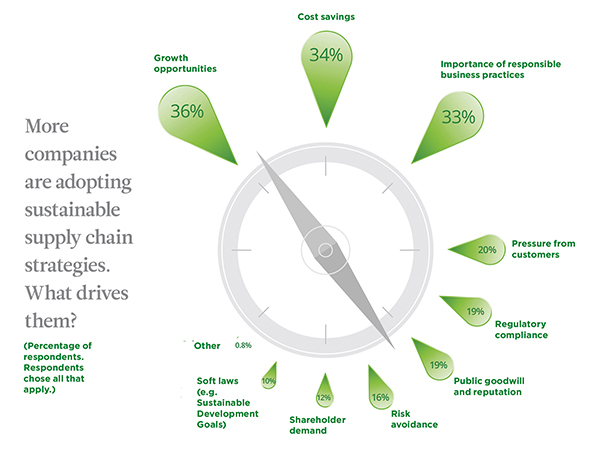Sustainability’s Missing Link

Economic performance is the top-ranking corporate sustainability priority for the majority of organizations, reveals a global survey of supply chain decision makers. When directly asked whether profitability or sustainability is more important, however, 60 percent give equal priority to these objectives, with another 25 percent leaning towards sustainability.
Conducted by the Economist Intelligence Unit, the research and analysis division of The Economist Group, and sponsored by LLamasoft, a supply chain optimization software and solutions provider, the survey of senior executives in 250 manufacturing and retail organizations across the United States, Latin America, EMEA, and APAC regions set out to explore supply chain approaches and priorities in relation to business sustainability, defined as the process by which companies manage their financial, social, and environmental risks, obligations, and opportunities over time.
When asked about the top drivers of supply chain sustainability in their organization, growth opportunities (36 percent), cost savings (34 percent) and the importance of responsible business practices (33 percent) head the list. Respondents are divided on whether supply chain sustainability has a positive or negative impact on cost, however, with increased costs cited as the largest impediment to supply chain sustainability and responsibility by 38 percent of respondents, especially those representing smaller businesses.
Respondents also cite difficulty in monitoring complex supply chains (29 percent) and organizational structures (24 percent) as barriers.
In North America, the survey finds a marked shift in priorities looking ahead to the next five years. When asked to consider their organization’s top supply chain management priorities over the past five years, American and Canadian respondents rank reducing operating costs as the most important. Over the next five years, however, improving product quality is the number one priority.
Reducing environmental impact is also viewed as being more important over the next five years, increasing from 12.9 percent to 19.4 percent.
